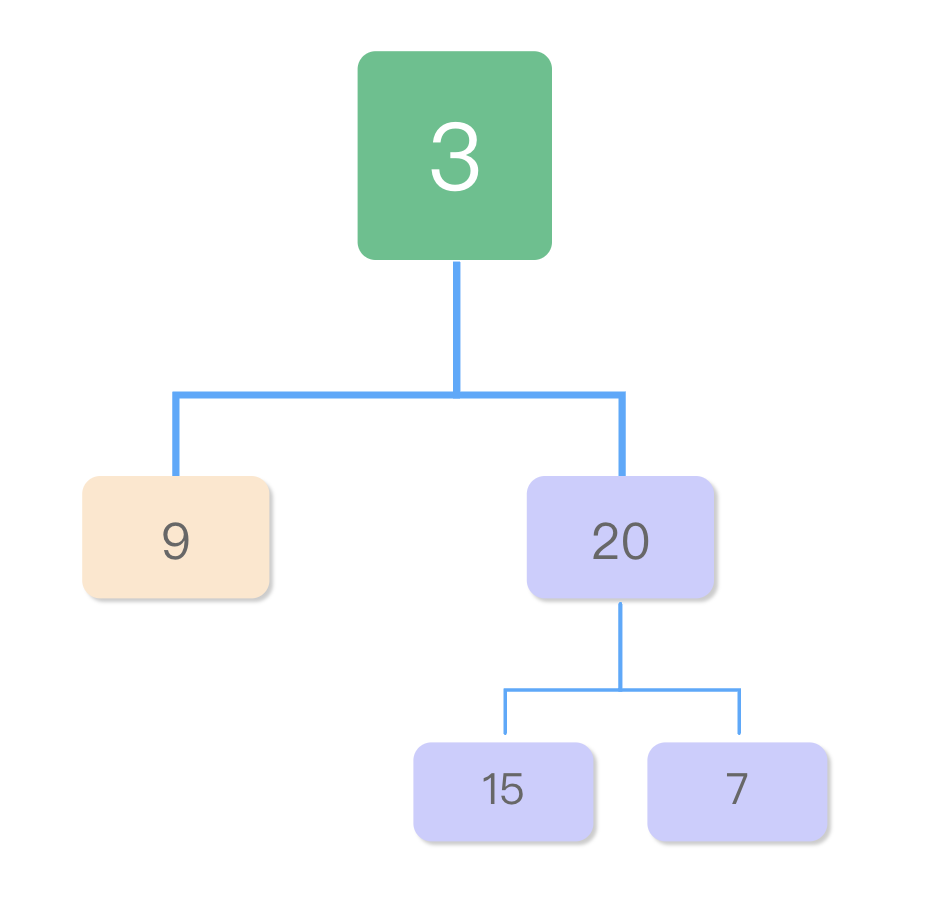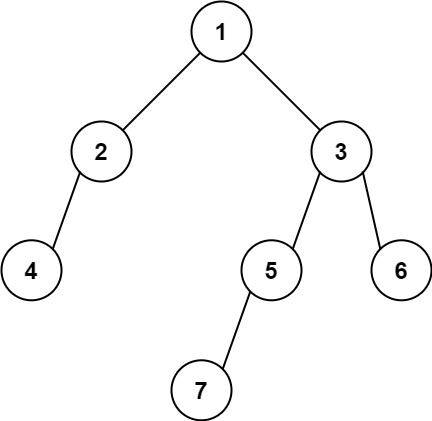我们在 LeetCode 上锻炼算法时,关于二叉树的题目,网站上给的都直接是一个数组,那么本地测试的时候,就很不方便。
官方文档中的解释是这样的:请问 [1, null, 2, 3] 在二叉树测试用例中代表什么。
1. javascript 版本 #
我们首先定义一个 TreeNode 的结构:
function TreeNode(val) {
this.val = val;
this.left = this.right = null;
}
我们用循环的方式,将数组转为二叉树结构。
const array2binary = (arr) => {
if (!arr || !arr.length) {
return null;
}
let index = 0;
const queue = [];
const len = arr.length;
const head = new TreeNode(arr[index]);
queue.push(head);
while (index < len) {
index++;
const parent = queue.shift();
if (arr[index] !== null && arr[index] !== undefined) {
const node = new TreeNode(arr[index]);
parent.left = node;
queue.push(node);
}
index++;
if (arr[index] !== null && arr[index] !== undefined) {
const node = new TreeNode(arr[index]);
parent.right = node;
queue.push(node);
}
}
return head;
};
使用:
const root = array2binary([3, 9, 20, null, null, 15, 7]);
最终转换成的树形结构:

2.C++ 版本 #
在 C++中的 vector 数据结构里,只能有一种类型,这里我们用INT_MAX来代替 null,需要转换的数组中的 null 也请用 INT_MAX 来代替。
我们的转换程序主要是应用在本地,为了方便本地的调试,因此在使用时,尤其要注意数据的范围,若真的用到了 INT_MAX 对应的数据,请把转换程序中代替 null 的INT_MAX更换为其他数字。
官方给的二叉树结构为:
struct TreeNode {
int val;
TreeNode *left;
TreeNode *right;
TreeNode() : val(0), left(nullptr), right(nullptr) {}
TreeNode(int x) : val(x), left(nullptr), right(nullptr) {}
TreeNode(int x, TreeNode *left, TreeNode *right) : val(x), left(left), right(right) {}
};
我们的转换程序如下:
/**
* 将leetcode中的数组转为二叉树
* 因C++中的vector只能是同一个类型,这里用INT_MAX来代替null
* @param {vector<int>} nums
* @return {TreeNode}
*/
TreeNode *vectorToTree(vector<int> nums) {
int i = 1;
bool isLeftTree = true; // 是否是左分支,true为左分支,false时是右分支
if (nums.size() == 0) {
return nullptr;
}
queue<TreeNode *> myQueue;
TreeNode *head = new TreeNode(nums[0]);
myQueue.push(head);
while (i < nums.size()) {
TreeNode *topNode = myQueue.front();
// 这里我们与js版稍微有点区别
// 队列中的节点只要用两次,当isLeftTree指向到右分支时,说明可以取出了
if (!isLeftTree) {
myQueue.pop();
}
// 我们用INT_MAX来标识nullptr
if (nums[i] != INT_MAX) {
TreeNode *node = new TreeNode(nums[i]);
if (isLeftTree) {
topNode->left = node;
} else {
topNode->right = node;
}
myQueue.push(node);
}
isLeftTree = !isLeftTree;
i++;
}
return head;
}
使用:
vector<int> nums = {3, 9, 20, INT_MAX, INT_MAX, 15, 7};
TreeeNode *root = vectorToTree(nums);
3. 测试 #
我们可以在 leetcode 中选择一个题目来测试下,就选最简单的二叉树前序遍历。
把题目中给到的数组数据,转为二叉树数据,然后再调试您的程序吧。
4. 题外话 #
刚开始经同事提示,添加了一个递归的方式,如:
// 错误代码,请不要直接使用
const array2binary = (arr, index = 0) => {
if (!arr || arr[index] === null || index >= arr.length) {
return null;
}
const node = new TreeNode(arr[index]);
node.left = array2binary(arr, index * 2 + 1);
node.right = array2binary(arr, index * 2 + 2);
return node;
};
这个代码只会在某些情况里正常,并不会适应 leetcode 里所有的二叉树的情况。如在513. 找树左下角的值中的第 2 个示例:
输入: [1,2,3,4,null,5,6,null,null,7]
输出: 7
实际的树结构是:

若使用最上面的迭代循环方式,是没有问题的,构建出来的树与例题中一样。但若使用这段递归的代码,就会出现问题,发现节点7没了。
这是因为:节点 2 的右子节点为 null 时,后续数组不会再用 null 为该空节点(2 右) 来填充他的子节点。使用上面队列结构循环时,我们会跳过(2 右)这个节点,接着处理节点 5。
但在递归的方式中,我们通过index * 2 + 1和index * 2 + 2来计算 arr[index]的左右节点,会把节点 7 算到(2 右)空节点的子节点上。从这里开始,后续的节点都会错位。
后来又想着怎么给这个递归程序补救一下,不过没找到实现的方式。